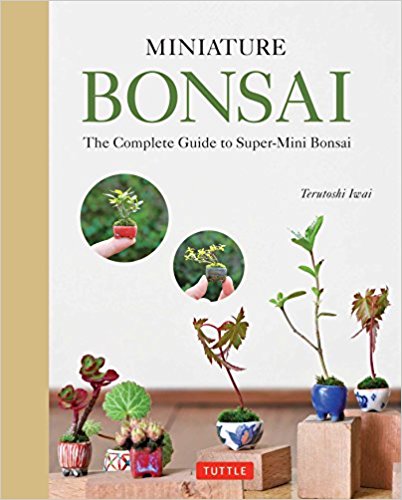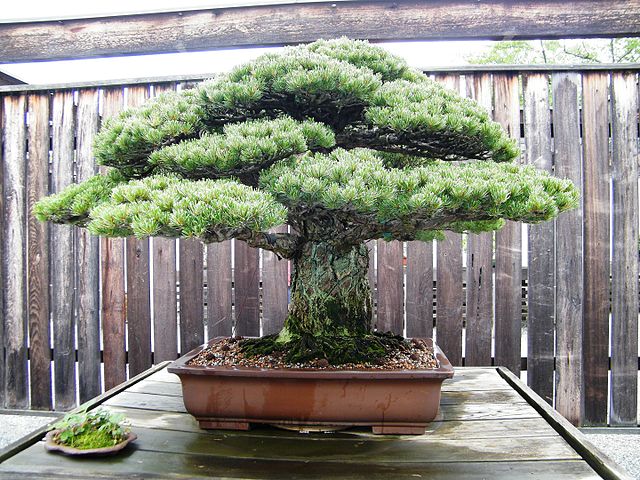On Sunday, September 17, the Columbia Public Library is hosting a bonsai show courtesy of the Mid-Missouri Bonsai Society. What more perfect excuse could there be to write about bonsai?
For those who might not know, bonsai is an art form that originated in China in which small trees are manipulated into desirable shapes using wires, pruning and a variety of tools. It translates into the Chinese words bon (or poon) meaning “pot” and sai (or sue) meaning “tree.” The amount of variation possible in the results of this process is amazing, taking into account all of the various tree species, geographical styles, pottery and compositions. It is a very personal expression of art and horticulture. Some people enjoy it chiefly for the meditative aspects of the work.
Though the practice started in China as early as the sixth century, the Japanese adopted it around the 12th century. One famous bonsai (pictured at right) lives at the National Bonsai & Penjing Museum in Washington, D.C. It is a Japanese white pine planted in 1625 by a family in Japan. The tree was groomed and trained through five generations of the family before it was gifted to the arboretum by two grandchildren of bonsai master Masaru Yamaki. The gift was a celebration of the U.S. bicentennial. Later, it was discovered that the generous gift had even more profound meaning, as the tree and the family had endured the bombing of Hiroshima only two miles from their home. The family and the tree survived the blast that killed 140,000 people and destroyed Hiroshima. The tree is now a symbol of peace and forgiveness.
If you are interested in trying bonsai for yourself, the library has several books to guide you. To get started you’ll need tools such as wire, bonsai wire cutters, small pliers and small pruning shears. You will also need a small pot (shallow pots are traditional), fertilizer and a good soil mix.
 As far as size is concerned, I am of the belief that the only way a little thing thing can be cuter is if it is miniature. For example, what’s cuter than a little puppy? Not much, but possibly, a miniature puppy. It’s a close call with puppies, but I was excited to see that we have a book about miniature bonsai, the smallest form of bonsai. Look at the size of these!
As far as size is concerned, I am of the belief that the only way a little thing thing can be cuter is if it is miniature. For example, what’s cuter than a little puppy? Not much, but possibly, a miniature puppy. It’s a close call with puppies, but I was excited to see that we have a book about miniature bonsai, the smallest form of bonsai. Look at the size of these!
Another bonsai book option (out of many) is “Bountiful Bonsai” by Richard Bender. I have to imagine you would get a tiny harvest from these plants, but it sounds delightful just the same.
If you can, come see the bonsai in person on Sunday, September 17 from 1-4 p.m. in the Friends Room of the Columbia Public Library. Should you be looking for a creative, contemplative pastime, visit the 635.9772 area of our nonfiction collection to get started in the art of bonsai.
Image credit: Sage Ross, Japanese White Pine via Wikimedia Commons (license)



